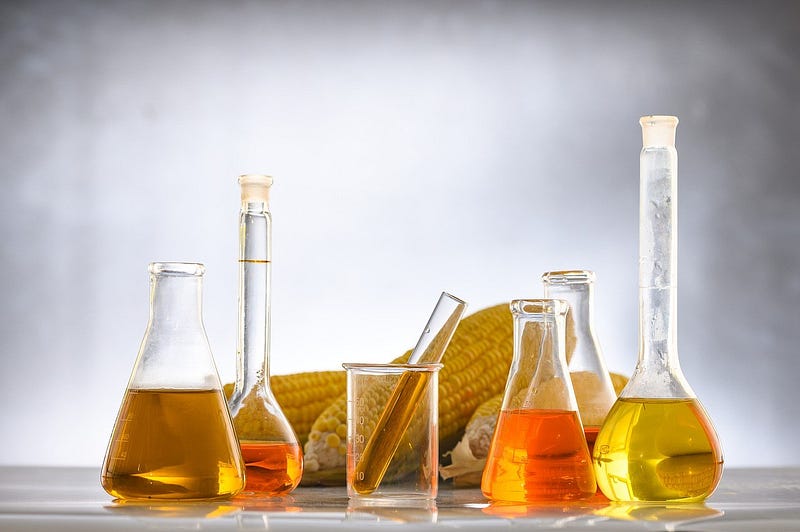The Groundbreaking Role of Plant Science in Enzyme Discovery
Written on
Chapter 1: The Importance of Plant Science
Plant science plays a crucial role in ensuring food security and combating climate change. However, its significance in fostering innovation and advancing knowledge across various fields is often underestimated. This neglect can deter aspiring scientists from pursuing careers in plant research.
In this series of blog posts, I aim to highlight key discoveries in plant science. Previously, I covered topics such as cell biology, Brownian motion, osmosis, and virology. In this fifth installment, I will focus on how plant science contributed to the identification of the first enzyme.

Section 1.1: Understanding Enzymes
Enzymes, often referred to as biological catalysts, play a vital role in facilitating biochemical reactions. They interact specifically with substrates, functioning like a "lock and key." While I didn’t appreciate their importance in school, enzymes are essential for processes such as converting carbon dioxide and water into sugars, detoxifying harmful substances, and maintaining cellular conditions.
Enzymes can accelerate reactions by a factor of 100 million to 10 billion, highlighting their significance in sustaining life. Without enzymes, biochemical reactions would occur at an exceedingly slow rate.
Subsection 1.1.1: The First Enzyme Discovered
Plant science research led to the discovery of the first biocatalyst. In 1833, Anselme Payen and Jean-Francois Persoz published a paper detailing their findings on diastase, a substance that converts insoluble starch into a soluble form. The term diastase derives from the Greek word for separation.
Today, we recognize diastase as amylase, the enzyme responsible for breaking down starch into sugar. Payen and Persoz’s pioneering work established a foundation for the field of enzymology and biochemistry.
Section 1.2: The Historical Context
Before Payen's research, Gottlieb Kirchhoff had already demonstrated catalysis using strong acids to decompose starch from potatoes. This earlier work also hints at the plant science connection to catalysis. Nevertheless, it was Payen and Persoz’s investigations that unified biology and chemistry, paving the way for biochemistry as a discipline.
Chapter 2: The Impact of Enzyme Purification
The successful enrichment of diastase marked the first attempt at enzyme purification. Today, this process remains fundamental in enzyme research and protein studies, with many companies specializing in developing purification tools.
Understanding enzymes is critical for various biological applications, including drug development and bioproduction. Biochemists invest significant time in enzyme purification experiments, as I experienced during my own research.
The first video titled "Carnivore Doctor Anthony Chaffee simplifies the carnivore diet" offers insights into dietary enzymes and their roles.
Section 2.1: The Naming Convention of Enzymes
Since the discovery of the first biocatalyst, scientists have identified over 10,000 enzymes across all life forms. Notably, many enzyme names, such as lipase, amylase, and polymerase, end with the suffix “-ase.” This naming convention was popularized by French scientist Pierre Duclaux in 1898, who proposed that all enzyme names should follow this rule in honor of diastase.
The second video titled "Mechanism of Enzyme Action | Botany | P. Janaki Ram | Rankers Learning" delves into the workings of enzymes, further enhancing our understanding of their mechanisms.
Section 2.2: Recognition in Science
A review of Nobel Prize winners reveals that numerous laureates have contributed to enzyme research, though none have emerged solely from plant science. While some plant scientists have worked on enzyme-related processes, the impact of plant research often goes unnoticed.
For instance, while Melvin Calvin received the Nobel Prize for his work on photosynthesis, the role of Rubisco, the most prevalent enzyme that fixes carbon, remains largely unrecognized.
Plant science continues to be overlooked, despite its significant contributions to biochemistry and interdisciplinary research.
Conclusion: The Legacy of Plant Science
This ongoing oversight has inspired me to write this series. There are countless significant enzyme discoveries across various organisms deserving of recognition. Yet, the pioneering plant science studies that initiated the field of biochemistry remain essential for future advancements.
The tradition of groundbreaking discoveries in plant science is likely to persist, regardless of external acknowledgment.
Tags: enzyme, industry, nobel prize, Plant Biology, Plant Science